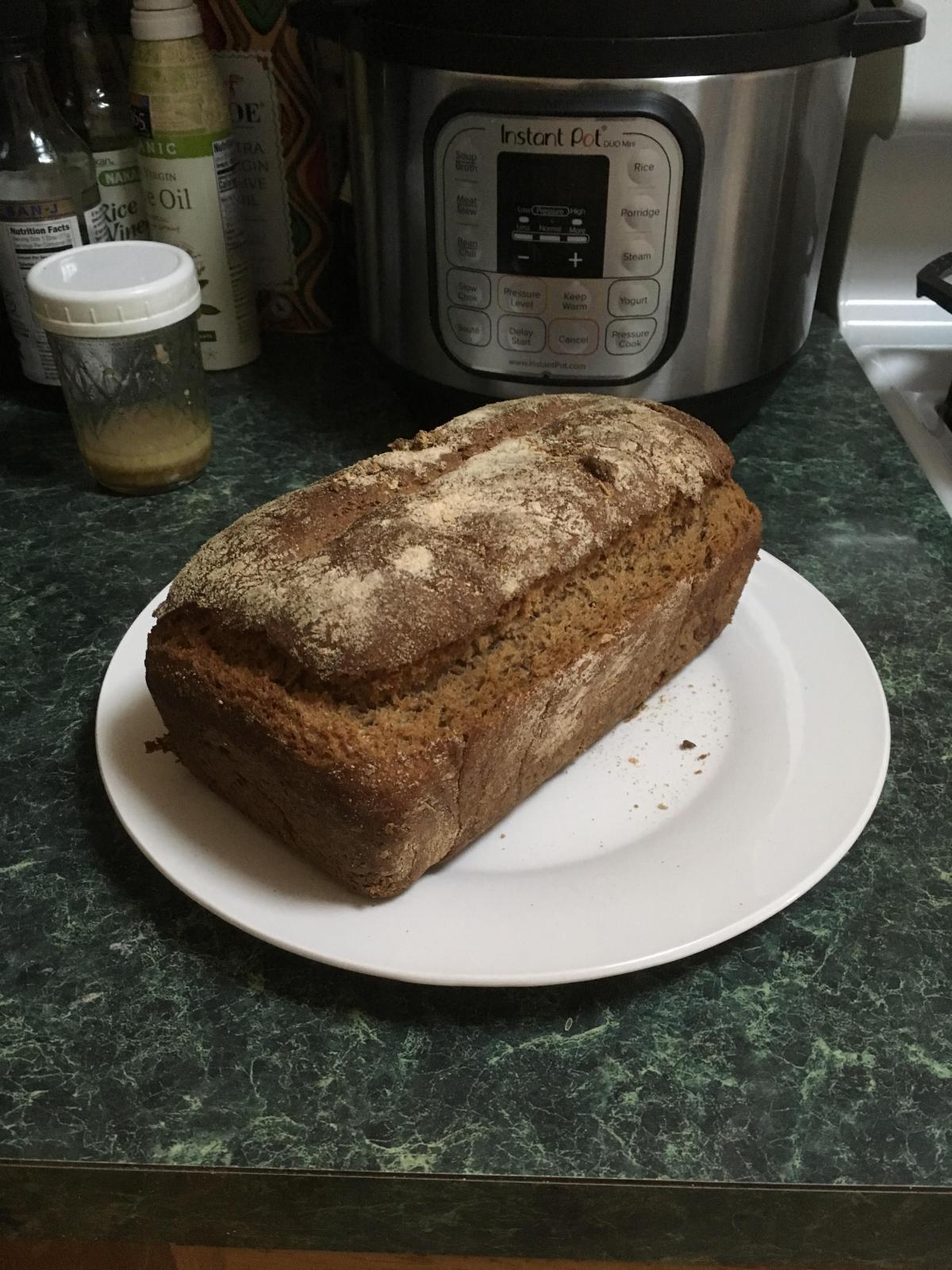September 5, 2018 - 12:26pm

Working on a 100% Whole Wheat

I've been making this recipe https://minimalistbaker.com/the-easiest-whole-grain-seeded-bread/ with some modifications, such as:
* Replacing the 1 3/4 cups of all-purpose flour with the same amount of King Arthur WW flour, for a total of 3 3/4 cups.
* Not adding flaxseed meal to the dough, but adding 1/4 cup of flaxseeds to after the initial rise.
It tastes great (to me) but I have been the loaf has a tendency to split around the top. When I look up split loaf (in a bad sense) I get suggestions to knead longer or add less flour.
For the pictured loaf I did the second knead for ~ 10 min, is there any hope of improving my techniques to the point of preventing the split or should I just suck it up and put in some gluten?


I almost only bake with 100% whole wheat. How do you determine when to put the loaf into the oven ? One possibility is that it is underproofed . I normally overproof, which means the bread collapses slightly as it bakes. If it is underproofed, as it goes into the oven, it tries to expand and crack. Time is generally not a good indicator of when it is ready to go into the oven, instead, the volume of the loaf is a much better indicator, though you may have to try the recipe several times, changing how much you let the loaf rise before you put it into the oven to determine what is the appropriate time to start baking it. I certainly would not add less flour. If you substituted WW for APP, you normally need to increase the amount of water, because WW is thirstier than AP.
Whole wheat flour can come in a variety of consistencies from extra coarse to extra fine. The various levels of grinding will result in bread with different textures.Whole wheat bread is a very nutritious food choice among people.
100% WW can be a soft flexible bread but it needs a few things we take for granted in any AP flour based loaf.
All WW needs adequate water but also THE TIME TO ABSORB IT. The recipe you are using does not have any time built in for the branny bits in WW to absorb the water and soften. After you bake the loaf, these internally dry branny bits will continue to absorb the moisture from the crumb and make for the typical crumbly slice.
After you mix the dough, set it aside for about 30 minutes (even overnight in the refrigerator). You might find that the consistency changes a lot and a little more liquid is called for. Easiest way is to have a bowl of water, dip your hands in and start kneading-re-wetting hands often. Knead like this until the dough is as soft/wet as you'd like. Then knead until you develop a windowpane (search this term-lots of info). Especially important if you are using pastry flour-you want to develop all the starchy gel you can from that flour.
Both of these actions can yield a soft, supple slice.
As for the splitting nd proofing-a crumb shot would be very helpful in diagnosing. Search- "poke" or "finger poke test". I would say from the oven spring and cracking that your loaf is a little underproofed. A few more minutes (5-10) would be called for.